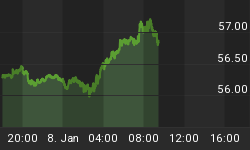As I have been watching the discussion on Real Bills evolve, it has become increasingly apparent to me that the rejection of Professor Fekete's Doctrine of Real Bills is founded, at least in part, on the concept of Monetary Purity. That is to say, that gold (or gold and silver) alone should be used as currency; any paper (ignoring the issue of its status as fiat or not) is to be quickly and harshly condemned as inflationary. Leaving the arguments of the economic viability of non-fiat paper currency to the experts, and accepting the Constitutional restriction on government issue of paper money (for those new to this, even the power to issue redeemable paper money is not granted to the Federal or State governments, thus in effect forbidding the issuance of anything other than coin), I wish to tackle the issue of paper currency from an unlikely angle in hope that the problem that I raise here will be considered, discussed, and solved.
Very simply put, people hate coins. This has been true for a very long time. Some of us have old silver coins because our fathers or grandfathers did not like to keep change in their pockets and emptied them out into jars on their dressers. If you have any doubts of this animosity, consider the coin-to-cash machines that have popped up at the entrance to many grocery stores. Here a person can exchange coins with little value for paper with less value, and that for a fee! The only explanation for such idiotic behavior is that there is a public demand for a way to exchange coins for something "better".
Think of the significance of this: the public will pay to get rid of coins in exchange for paper, indicating that the public considers paper money better than coin. So then, it is not unreasonable to assume that no matter how terrible the economic disaster that is to come, the public will, in the end, want its paper back. This goes a long way in explaining why people have repeatedly accepted a return to valueless currencies throughout history. Paper has a long, if not distinguished history as a form of money going all the way back to the ancient Chinese empires.
The reasons for the issuance of paper by those in power have been examined by many monetary historians, and I will not recount them here, but it might be good to look at the reasons the public has willingly accepted paper money (and even seems to like it). First of all, paper does not take up much space. I can keep $10 in paper in places that I could never fit 10 silver Dollars. Second, volume is not related to value. With paper it is possible to store $1,000 in the same space as $10. Third, the weight is negligible. Those ten Federal Reserve Notes weigh almost nothing in my pocket, certainly less than one silver Dollar. From the viewpoint of the consumer who assumes that the value printed on the paper means something, these qualities are desirable and worth fighting for. That attitude may seem simplistic and uneducated (from a monetary perspective), but this is the attitude of the majority of the population. The danger lurking here is that the public will be suckered into accepting a "better fiat" at the very moment that they should have asked for money with real value.
The desire for convenience will be fanned and encouraged to a raging fire against any return to actual gold/silver based system that does not include paper. The enemies of Real Money will not simply die (or even admit defeat) when their system collapses. Neither will they learn their lessons. They will return, first to secure that all the paper that they have retains some sort of value (the shear volume dictates that this must not be allowed, or at very least should be limited), and then attempt to recreate a "new" fiat money system (under a new label of course) as soon as possible. If no appealing alternative is offered by our side, we will lose the fight and be relegated to sitting on the internet again, bemoaning how people do not understand the truth. As I have stated previously, action must be taken to coordinate the efforts of those who support a return to Constitutional money before it is too late.
I humbly submit one possible solution that would be Constitutional, and limited in its inflationary effects. One monetary metal (platinum, but my arguments for why I believe that it qualifies as a monetary metal will have to wait for another time) would be linked to a paper currency. This currency would be issued and backed by individual banks with no legal tender status beyond what participating banks would be legally required to exchange for it. The minimum exchange rate (and thus, issuing ratio) would be fixed by law allowing for usage by any participating bank. The currency would only be permitted for private transactions and would be limited in quantity (and so, hopefully not interfering with Real Bills). Thus, a flexible, redeemable, currency would exist, purely for public, retail use. My proposed name: Continentals, what else?
Another solution is presented by the mechanical properties of gold itself. Gold is so malleable that it can be hammered into extremely thin sheets. These thin "coins" could be attached to paper and then laminated over. If we posit that there are at least two currency denominations in the U.S., Dollars (silver) and Eagles (gold), then denominations as low as 1/10,000th of an Eagle are possible, presenting the public with money that has both intrinsic value and the convenience of paper.
Whatever the solution is to satisfying the need for real money while balancing the desire for ease of use, it will not be easy to convince those in power to implement that solution without the understanding and backing of the majority of the public.
















